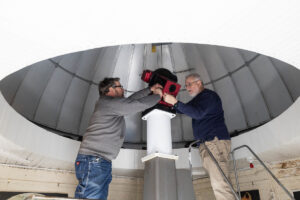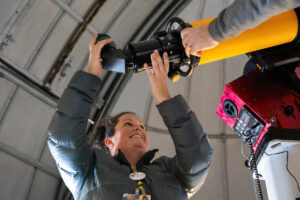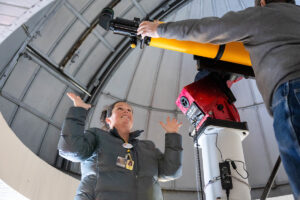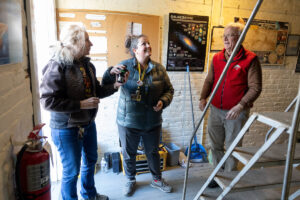New telescope, renovations cast new light on College’s observatory
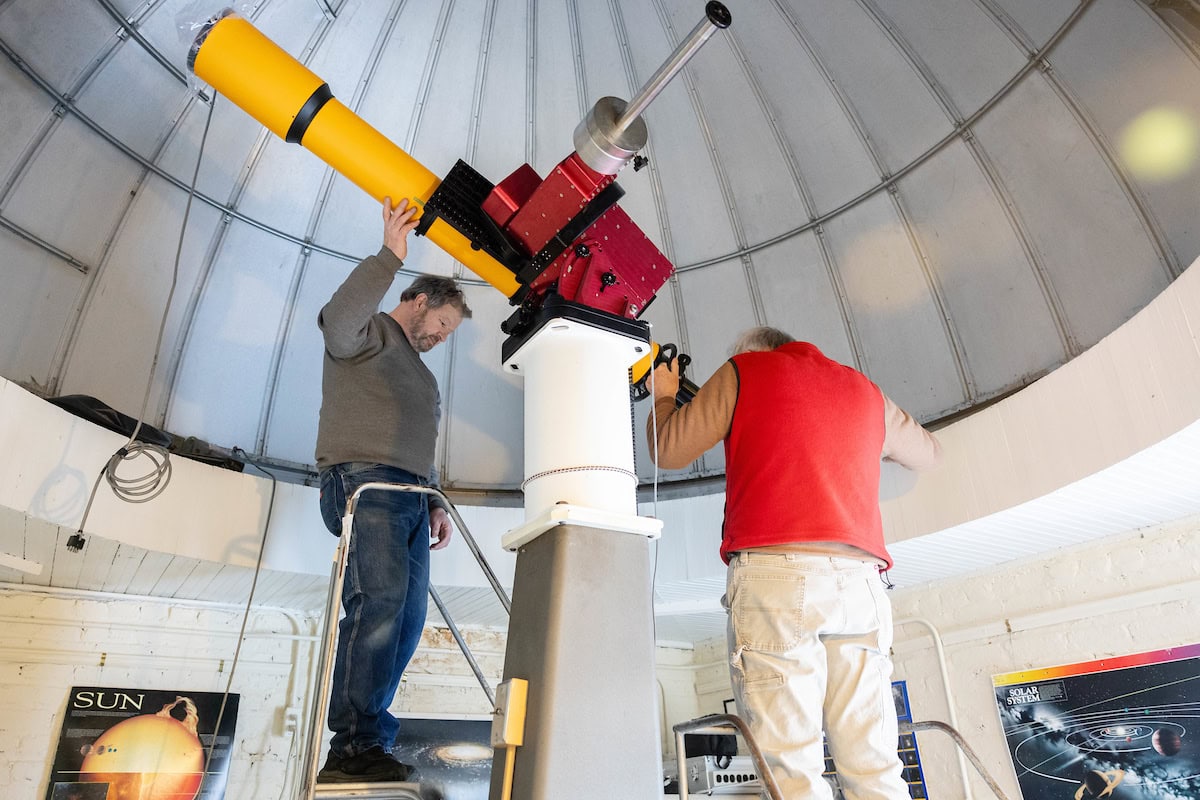
The college’s new telescope, installed in March, is a 6-inch refractor telescope that harkens back to the original instrument used in 1900.
Randolph’s Winfree Observatory is giving a nod to its unique history this year with the addition of a new telescope and a building refresh.
Back in 1900, the College’s first observatory was built on front campus, near where Smith Hall now stands. The one-story, domed observatory was named in honor of a prominent Lynchburg citizen and College benefactor, Christopher V. Winfree, and housed a 6-inch refractor telescope.
In 1923, when construction began on Smith Hall, the building was removed and a new two-story brick observatory was built on back campus, near what was then an athletic field and is now Bell Parking Lot. Since that time, the observatory has changed telescopes several times, first with a 12-inch Cassegrain telescope in 1962 and then with a 14-inch Celestron Schmidt-Cassegrain telescope. The observatory also opened for public observing sessions, which were led for many years by longtime professor Tom Michalik.
In March, thanks to the work of several faculty and staff and with the support of donors, Randolph was able to upgrade its telescope once again.
“Randolph’s observatory offers incredible opportunities for both our students and the Lynchburg community,” said Peter Sheldon, the Charles A. Dana Professor of Physics and Engineering and one of the faculty members leading the effort to upgrade the facility. “Science outreach is a big part of what we do, and the observatory is a particularly unique and historic part of our campus. We are so excited about these recent improvements and additions and how they will allow us to expand the educational experiences we offer.”
The new telescope is a 6-inch refractor telescope that harkens back to the original instrument used in 1900.
“Refracting telescopes are really good these days, and we thought that was really poetic, a way to touch base with the past while still having the new,” said Katrin Schenk, professor of physics and engineering. “We really liked that idea.”
Beyond its historical symbolism, the new instrument also enhances the viewing experience.
“It offers really perfect, beautiful outreach images of solar system objects and star clusters,” said Trish Cerulli, assistant director of Randolph’s SciFest, administrator for the SUPER program, and an adjunct instructor in astronomy.
While the new telescope takes center stage, the College will keep its previous instrument, with hopes of eventually refurbishing it for future use.
Randolph was also able to make updates to the observatory itself, which has become an increasingly popular place for the public to gather to see the stars during Randolph’s Star Parties. Future plans include the addition of a cement area on the lawn by the observatory to create an accessible space to view the skies.
The new telescope and renovations were the result of donors. Win Sykes Koontz ’57 and Emily Sykes McDermott ’62 provided the lead gift in honor of their father, William Sykes, who helped fund the purchase of one of the observatory’s telescopes when they were both students.
The Greater Lynchburg Community Foundation also provided a $3,000 grant in keeping with its mission to benefit community outreach initiatives like Randolph’s Star Parties and SciFest.
The Blue Ridge Astronomy Club helped with the installation alongside Second Light Observatory Services, a nonprofit that works to help refurbish small college observatories.
Randolph also upgraded the main, first-floor area in the observatory to make it more suited to space science outreach activities.
“It’s more of a classroom, in a way, now,” Cerulli said. “If there’s poor viewing weather, we can still have a program.”
This story appears in the Spring 2025 issue of the College’s Magazine, “Vita Abundantior.”
Tags: astronomy, science outreach, vita spring 2025, Winfree Observatory
